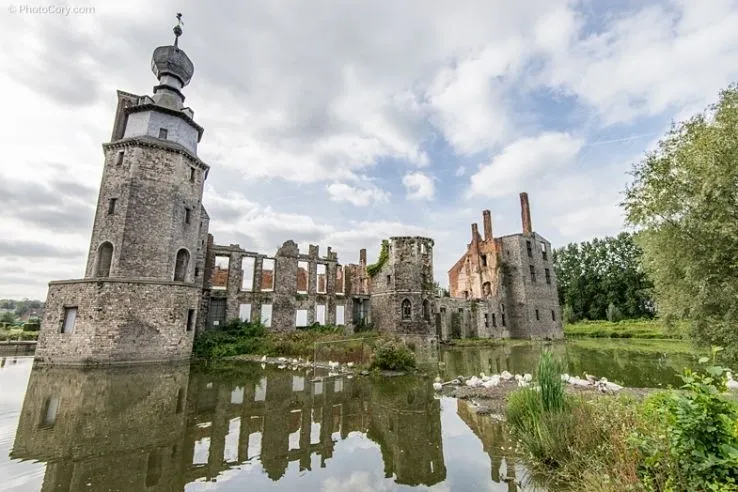Located in the picturesque town of Havré, Belgium, the historic Havré Castle, locally known as Château d’Havré, stands as an architectural marvel in the province of Hainaut, nestled within the scenic Wallonia region.
Dating back to the 12th century, Havré Castle was initially built by the Enghien family, serving as a crucial stronghold along the banks of the Haine river. Its strategic location provided advanced defense for the nearby town of Mons. The castle’s unique rectangular layout is a testament to its early architectural design.

Throughout its rich history, Havré Castle has weathered significant challenges, including a near-destruction in 1365 when it was seized by a Flemish army during regional conflicts. Despite facing numerous sieges and changes of ownership, the castle endured.
In 1518, Havré Castle entered a new era when it was acquired by Philippe de Croy through a substantial property exchange. This pivotal moment marked a transition for the castle, elevating its significance as it became a hub for influential figures of the period.



Under the stewardship of Charles-Alexandre de Croy, Havré Castle became a center of cultural and intellectual activity, welcoming esteemed guests such as the renowned painter Peter Paul Rubens, royalty including Marie de Medicis and the Infanta Isabella Clara Eugenia of Spain, as well as political figures like the Duke of Marlborough and the Prince of Savoy. Despite periods of neglect after the departure of the Croy family in 1839, Havré Castle experienced a revival in the 20th century. Extensive restoration efforts were undertaken to revive its former splendor, reversing years of decay caused by neglect and vandalism. Today, Havré Castle stands as a testament to Belgium’s rich medieval heritage, offering visitors a glimpse into its fascinating past.




